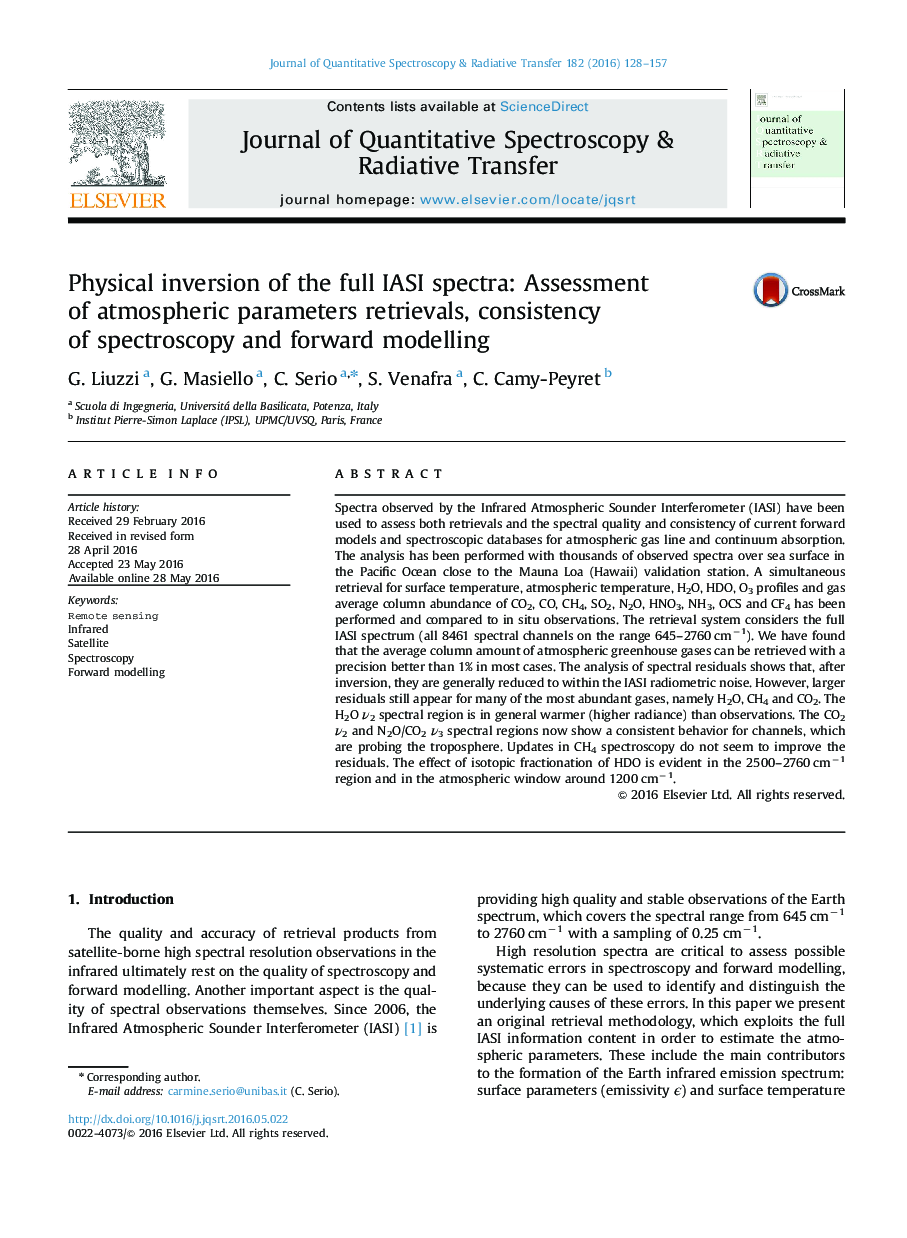| کد مقاله | کد نشریه | سال انتشار | مقاله انگلیسی | نسخه تمام متن |
|---|---|---|---|---|
| 5427561 | 1508633 | 2016 | 30 صفحه PDF | دانلود رایگان |

- This is the first work that uses the full IASI spectrum. This aspect is new and unique.
- Simultaneous retrieval of the average amount of CO2, N2O, CO, CH4, SO2, HNO3, NH3, OCS and CF4, T, H2O, HDO, O3 profiles, and Ts.
- Assessment of spectroscopy consistency over the full IASI spectrum (645 to 2760 cmâ1).
- Two-year record of IASI retrievals are available on request, compared with in situ and other satellite products.
- Retrieval from instantaneous (no time-space average) IASI FOVs in NH3 polluted areas.
Spectra observed by the Infrared Atmospheric Sounder Interferometer (IASI) have been used to assess both retrievals and the spectral quality and consistency of current forward models and spectroscopic databases for atmospheric gas line and continuum absorption. The analysis has been performed with thousands of observed spectra over sea surface in the Pacific Ocean close to the Mauna Loa (Hawaii) validation station. A simultaneous retrieval for surface temperature, atmospheric temperature, H2O, HDO, O3 profiles and gas average column abundance of CO2, CO, CH4, SO2, N2O, HNO3, NH3, OCS and CF4 has been performed and compared to in situ observations. The retrieval system considers the full IASI spectrum (all 8461 spectral channels on the range 645-2760 cmâ1). We have found that the average column amount of atmospheric greenhouse gases can be retrieved with a precision better than 1% in most cases. The analysis of spectral residuals shows that, after inversion, they are generally reduced to within the IASI radiometric noise. However, larger residuals still appear for many of the most abundant gases, namely H2O, CH4 and CO2. The H2O ν2 spectral region is in general warmer (higher radiance) than observations. The CO2ν2 and N2O/CO2ν3 spectral regions now show a consistent behavior for channels, which are probing the troposphere. Updates in CH4 spectroscopy do not seem to improve the residuals. The effect of isotopic fractionation of HDO is evident in the 2500-2760 cmâ1 region and in the atmospheric window around 1200 cmâ1.
Journal: Journal of Quantitative Spectroscopy and Radiative Transfer - Volume 182, October 2016, Pages 128-157